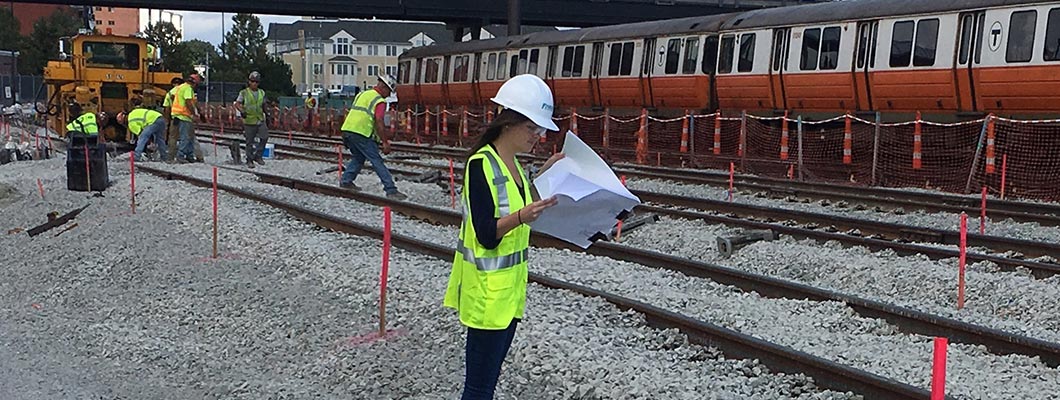The following projects illustrate examples of Keville Enterprises’ experience in the Rail and Transit market.
Dulles Rail Phase I and II
Client: Metropolitan Washington Airports Authority (MWAA)
Location: Fairfax, VA
Services: Construction Management Services including CPM scheduling, cost estimating, document control and quality assurance services
Completion Date: 2020
Keville Enterprises Inc. provided construction management services in connection with Phase I & II of construction associated with the extension of the WMATA heavy rail system to Loudoun County including Dulles Airport. The Phase I $2.9 billion, 11.6-mile project connects to the existing WMATA system in East Falls Church and includes five new stations with an interim termination at Wiehle Ave.-Reston East station. The alignment of the new heavy rail transit system connects to the existing system at East Falls Church follows a viaduct to the Dulles Connector road where it stays on grade until rising to another viaduct crossing the Washington Beltway (I-495). It then follows Routes 7 and 123 in Fairfax, Virginia through a heavily congested environment via a 2400 foot tunnel section under Tysons Corner and emerging on a viaduct section along Route 7 to the Dulles Toll Road median where the guideway is at grade. The project also includes a major expansion of the rail yard at West Falls Church. KEVILLE personnel provide quality assurance services in connection with all aspects of the construction program including communication systems; track; power; automatic train control; civil, building and structures construction; fire protection; escalators and elevators. The project also required significant coordination with the Virginia Department of Transportation (VDOT) in Phase I where guideway construction was conducted in the median of Route 7; a major transportation artery in Northern Virginia. Maintenance of Traffic restrictions within the Route 7 Corridor allowing access to local businesses and commuters yet allowing for major infrastructure construction was a significant challenge that was achieved by the project team.
Phase II of the Silver Line a $2.7 billion, 11.2-mile extension to Phase I ties in to the existing system terminus at the Wiehle Ave.-Reston East station. Phase II includes six new stations including the Dulles Airport Station and terminates at the Ashburn (Route 772) Station. A major component is the construction of a new rail yard that will become home to the largest rail yard and maintenance facility in the WMATA system, with the ability to hold over 160 train cars. KEVILLE personnel provide Quality Assurance (Q/A) services in connection with all aspects of the construction program including utilities; roadways; communication systems; track; power; automatic train control; civil, building and structures construction; fire protection; escalators and elevators. In addition Keville personnel provided CPM scheduling, cost estimating services and document control services.
Norfolk Light Rail System
Client: Hampton Roads Transit
Location: Norfolk, Virginia
Services: Construction Management
Completion Date: 2010
Keville Enterprises provided construction management and inspection services in connection with the new $232M Norfolk Light Rail System (The TIDE).
Significant project elements included:
- 11 stations
- 3 Park and Ride lots
- Overhead traction power propulsion system for nine LRT vehicles on the 7.4 route miles of the system
- Ballasted track
- Vehicle storage and maintenance yard
- Embedded track through downtown Norfolk
- The construction of two major bridges over water at Broad Creek and Smith Creek, along with four other bridges
As a sub-consultant on this project, Keville provided construction management services including project control and construction inspection services for HRT. Daily activities included: preparing Daily Progress Reports; taking periodic construction progress photos and special field condition photos; evaluating and processing proposed change orders; processing project submittals and providing weekly verification that the GC was maintaining a current set of as-built record drawings; reviewing the GC’s pay requisitions for accuracy and verifying that actual work had been completed; and ensuring that all daily reports, test results, and all additional reports, records, and documentation were maintained in a complete and orderly manner.

